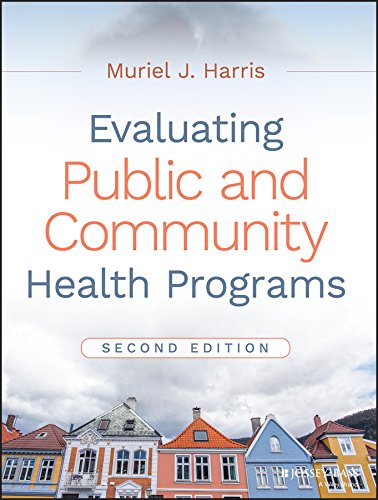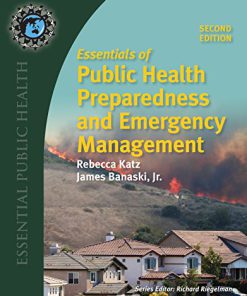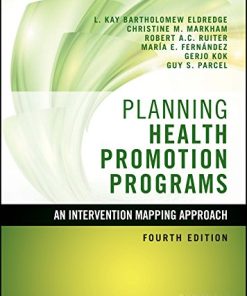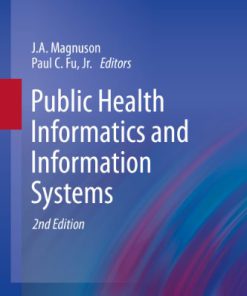Evaluating Public and Community Health Programs 2nd Edition, (Ebook PDF)
$50.00 Original price was: $50.00.$25.00Current price is: $25.00.
Evaluating Public and Community Health Programs 2nd Edition, (Ebook PDF) – Digital Instant Dowload.
Evaluating Public and Community Health Programs 2nd Edition, (Ebook PDF) – Digital Instant Dowload.

Product details:
- ISBN-10 : 1119151058
- ISBN-13 : 978-1119151050
- Author: Muriel J. Harris
Evaluating Public and Community Health Programs provides a comprehensive introduction to the theory and practice of evaluation, with a participatory model that brings stakeholders together for the good of the program. Linking community assessment, program implementation, and program evaluation, this book emphasizes practical, ongoing evaluation strategies that connect theory with application. This updated second edition includes new discussion on planning policy change programs using logic models and theory of change, plus expanded coverage of processes, outcomes, data collection, and more. Each chapter includes classroom activities and group discussion prompts, and the companion website provides worksheets, lecture slides, and a test bank for instructors. Mini cases help illustrate the real-world applications of the methods described, and expanded case studies allow students to dig deeper into practice and apply what they’ve learned.
Table contents:
CHAPTER 1: AN INTRODUCTION TO PUBLIC AND COMMUNITY HEALTH EVALUATION
Overview of Evaluation
Levels of Evaluation
Preassessment Evaluations
The Participatory Approach to Evaluation
The Participatory Model for Evaluation
The Precursors to Program Evaluation
Cultural Considerations in Evaluation
Summary
Discussion Questions and Activities
Key Terms
CHAPTER 2: THE COMMUNITY ASSESSMENT: AN OVERVIEW
Theoretical Considerations
The Ecological Model
Data Collection
Data Sources
Reviewing the Scientific Literature
The Report
Stakeholders’ Participation in Community Assessments
Summary
Discussion Questions and Activities
Key Terms
CHAPTER 3: DEVELOPING INITIATIVES: AN OVERVIEW
The Organization’s Mission
Planning the Initiative
Incorporate Theory
Goals and Objectives
The Initiative’s Activities
Use Existing Evidence‐Based Programs
The Program’s Theory of Change
The Logic Model Depicting the Theory of Change
Criteria for Successful Initiatives
Stakeholders’ Participation in Planning and Developing Initiatives
Summary
Discussion Questions and Activities
Key Terms
CHAPTER 4: PLANNING FOR EVALUATION: PURPOSE AND PROCESSES
The Timing of the Evaluation
The Purpose of Evaluation
The Contract for Evaluation
The Evaluation Team
Evaluation Standards
Managing the Evaluation Process
Factors That Influence the Evaluation Process
Planning for Ethical Program Evaluation
Involving Stakeholders
Creating and Maintaining Effective Partnerships
Summary
Discussion Questions and Activities
Key Terms
CHAPTER 5: DESIGNING THE EVALUATION: PART 1: DESCRIBING THE PROGRAM OR POLICY
The Context of the Initiative
The Social, Political, and Economic Environment
The Organizational Structure and Resources
The Initiative and Its Relationship to the Organization
The Stage of Development of the Initiative
Data Access and Availability
The Program Initiative
The Policy Initiatives
Summary
Discussion Questions and Activities
Key Terms
CHAPTER 6: DESIGNING THE EVALUATION: PART 2A: PROCESS EVALUATION
Purposes of Process Evaluation
Key Issues in Process Evaluation
Selecting Questions for Process Evaluation
Resources for Evaluation
Measuring Resources, Processes, and Outputs
Tools for Process Evaluation
Ethical and Cultural Considerations
Summary
Discussion Questions and Activities
Key Terms
CHAPTER 7: DESIGNING THE EVALUATION: PART 2B: OUTCOME EVALUATION
The Relationship Between Process and Outcome Evaluation
Sorting and Selecting Evaluation Questions
Summary
Discussion Questions and Activities
Key Terms
CHAPTER 8: COLLECTING THE DATA: QUANTITATIVE
Quantitative Data
Factors Influencing Data Collection
Using Surveys
Designing Survey Instruments
Pilot Testing
Triangulation
Institutional Review and Ethics Boards
The Data Collection Team
Managing and Storing Data
Stakeholder Involvement
Summary
Discussion Questions and Activities
Key Terms
CHAPTER 9: COLLECTING THE DATA: QUALITATIVE
Qualitative Data
Ensuring Validity and Reliability
Interview‐Format Approaches
Document and Record Review
Observational Approaches
Case Reviews
Digital Approaches
Geographic Information Systems
Training Data Collectors
Managing and Storing Qualitative Data
Stakeholder Involvement
The Data Collection Team
Summary
Discussion Questions and Activities
Key Terms
CHAPTER 10: ANALYZING AND INTERPRETING QUANTITATIVE AND QUALITATIVE DATA: QUANTITATIVE (PART 1)
Analyzing and Reporting Quantitative Data
Reaching Conclusions
Stakeholder Involvement
Summary
Discussion Questions and Activities
QUALITATIVE (PART 2)
Analyzing Qualitative Data
Interpreting the Data and Reaching Conclusions
The Role of Stakeholders
Summary
Discussion Questions and Activities
Key Terms
CHAPTER 11: REPORTING EVALUATION FINDINGS
The Content of the Report
The Audience for the Report
The Timing of the Report
The Format of the Report
Summary
Discussion Questions and Activities
Key Terms
CHAPTER 12: CASE STUDY: THE COMMUNITY ASSESSMENT
Background
Establish a Team
Determine the Availability of Data
Decide on the Data‐Collection Approaches and Methods
Training
Resource Procurement
Analysis and Interpretation of the Data
Summary of Findings
The Intervention
Design the Evaluation
Collect the Data
Analyze and Interpret the Data
Report the Results
Discussion Questions and Activities
CHAPTER 13: CASE STUDY: PROCESS EVALUATION
Background
Theoretical Framework
Community Assessment Findings
The Evaluation Plan
Answering the Evaluation Question
Reporting the Results
You may also like…
Uncategorized
Health
Planning, Implementing & Evaluating Health Promotion Programs: A Primer 7th Edition, (Ebook PDF)
Uncategorized
Uncategorized
Community & Public Health Nursing: Promoting the Public’s Health 9th Edition, (Ebook PDF)
Uncategorized
Community/Public Health Nursing E Book: Promoting the Health of Populations 7th Edition, (Ebook PDF)













